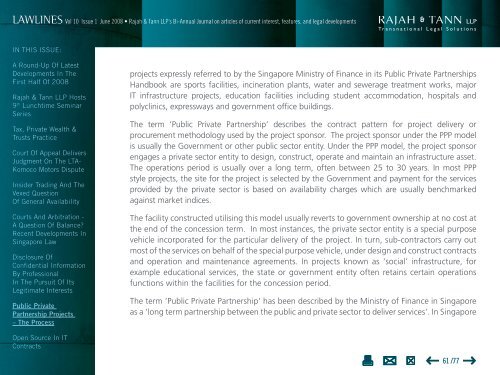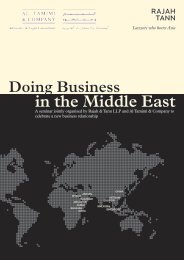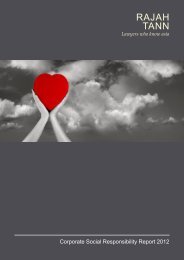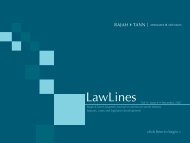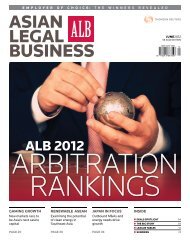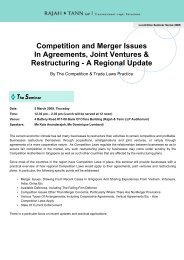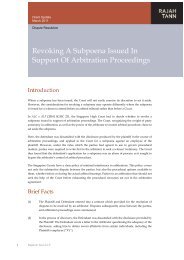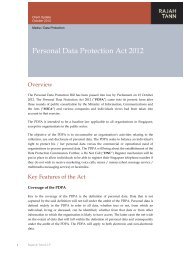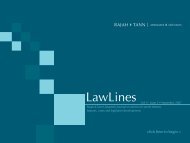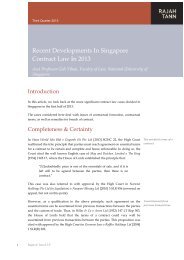Lawlines Vol 10 Issue 1 - eOASIS - Rajah & Tann LLP
Lawlines Vol 10 Issue 1 - eOASIS - Rajah & Tann LLP
Lawlines Vol 10 Issue 1 - eOASIS - Rajah & Tann LLP
Create successful ePaper yourself
Turn your PDF publications into a flip-book with our unique Google optimized e-Paper software.
<strong>Vol</strong> <strong>10</strong> <strong>Issue</strong> 1 June 2008 • <strong>Rajah</strong> & <strong>Tann</strong> <strong>LLP</strong>’s Bi-Annual Journal on articles of current interest, features, and legal developmentsIN THIS ISSUE:A Round-Up Of LatestDevelopments In TheFirst Half Of 2008<strong>Rajah</strong> & <strong>Tann</strong> <strong>LLP</strong> Hosts9 th Lunchtime SeminarSeriesTax, Private Wealth &Trusts PracticeCourt Of Appeal DeliversJudgment On The LTA-Komoco Motors DisputeInsider Trading And TheVexed QuestionOf General AvailabilityCourts And Arbitration -A Question Of Balance?Recent Developments InSingapore LawDisclosure OfConfidential InformationBy ProfessionalIn The Pursuit Of ItsLegitimate InterestsPublic PrivatePartnership Projects– The Processprojects expressly referred to by the Singapore Ministry of Finance in its Public Private PartnershipsHandbook are sports facilities, incineration plants, water and sewerage treatment works, majorIT infrastructure projects, education facilities including student accommodation, hospitals andpolyclinics, expressways and government office buildings.The term ‘Public Private Partnership’ describes the contract pattern for project delivery orprocurement methodology used by the project sponsor. The project sponsor under the PPP modelis usually the Government or other public sector entity. Under the PPP model, the project sponsorengages a private sector entity to design, construct, operate and maintain an infrastructure asset.The operations period is usually over a long term, often between 25 to 30 years. In most PPPstyle projects, the site for the project is selected by the Government and payment for the servicesprovided by the private sector is based on availability charges which are usually benchmarkedagainst market indices.The facility constructed utilising this model usually reverts to government ownership at no cost atthe end of the concession term. In most instances, the private sector entity is a special purposevehicle incorporated for the particular delivery of the project. In turn, sub-contractors carry outmost of the services on behalf of the special purpose vehicle, under design and construct contractsand operation and maintenance agreements. In projects known as ‘social’ infrastructure, forexample educational services, the state or government entity often retains certain operationsfunctions within the facilities for the concession period.The term ‘Public Private Partnership’ has been described by the Ministry of Finance in Singaporeas a ‘long term partnership between the public and private sector to deliver services’. In SingaporeOpen Source In ITContracts61 /77


